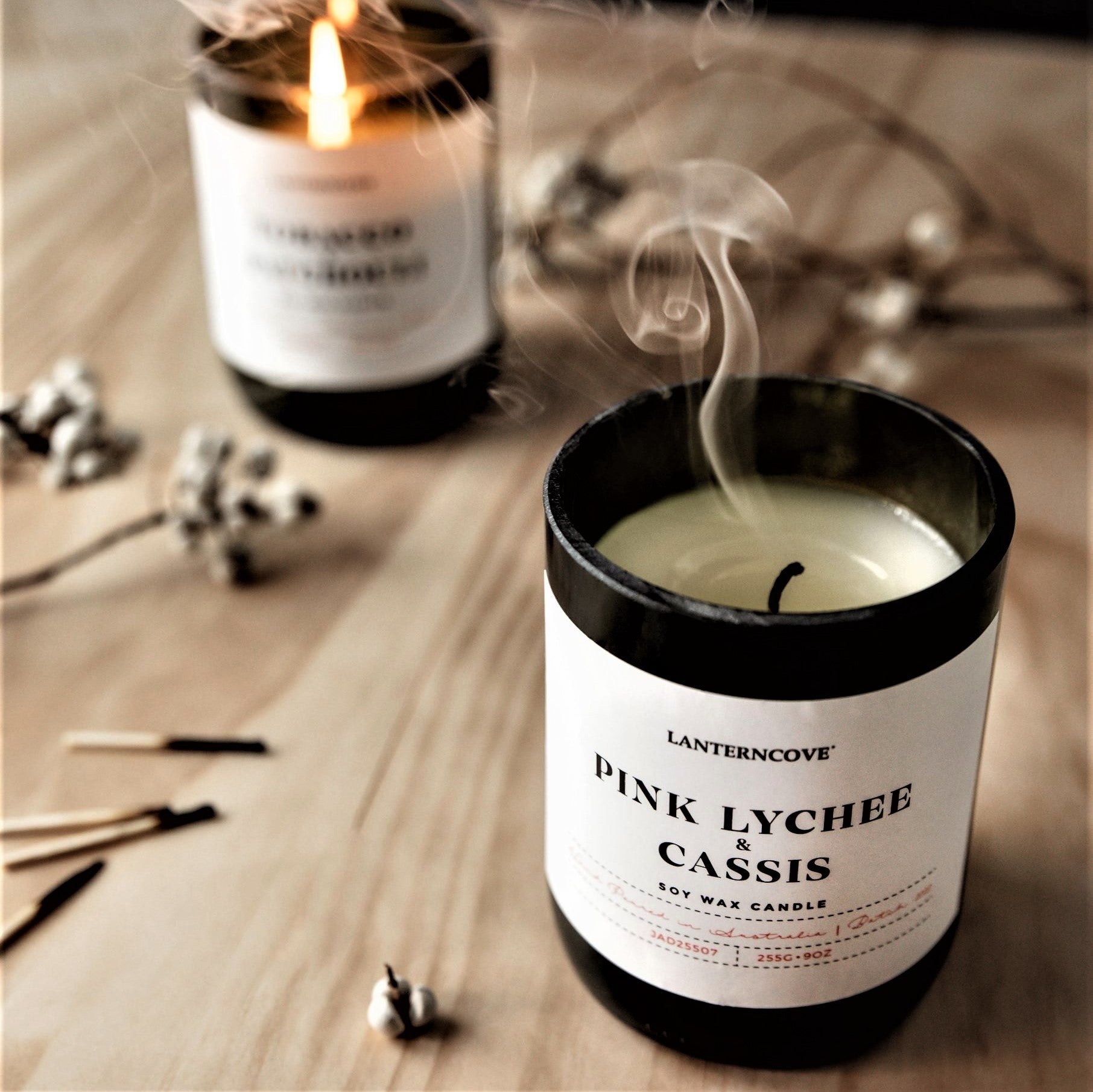Explore the Magic of Crystal Soy Candles and Home Fragrance
Explore the Magic of Crystal Soy Candles and Home Fragrance
Blog Article
From Wick to Wax: Recognizing the Chemistry Behind Soy Wax Candles and Their Ecological Impact
As we brighten our areas with the warm radiance of candles, there lies a world of intricate chemistry behind the seemingly easy act of lighting a soy wax candle. The option between soy and paraffin wax prolongs beyond simple aesthetic appeals, delving right into the realm of ecological effect and the extremely composition of the products. Comprehending the molecular framework of soy wax and its combustion process sheds light on the discharges launched right into our environments. Join us as we untangle the clinical intricacies behind soy wax candles and discover their effects on our setting.
Soy Wax Vs. Paraffin Wax
When contrasting soy wax and paraffin wax for candle light making, it is important to recognize the unique qualities and benefits of each material. Soy wax is an all-natural, renewable resource derived from soybean oil, making it naturally degradable and environment-friendly - soy wax candles. On the other hand, paraffin wax is a byproduct of petroleum refining, which increases problems about its ecological impact and sustainability
Soy wax candles shed cleaner and give off much less residue compared to paraffin wax candle lights, making them a much healthier option for indoor air high quality. Additionally, soy wax has a reduced melting point, enabling for a longer-lasting candle light that distributes fragrance much more efficiently. Paraffin wax, on the other hand, tends to melt faster and much less easily, possibly launching dangerous chemicals right into the air.
From a sustainability perspective, soy wax is favored for its biodegradability and renewable sourcing, straightening with the growing consumer choice for eco conscious items. While paraffin wax has actually been a standard choice in candle making due to its cost and ease of use, the change in the direction of environmentally friendly options like soy wax is gaining energy in the industry.
Chemical Structure of Soy Wax

Burning Process in Soy Candles
The chemical structure of soy wax straight influences the combustion procedure in soy candles, influencing variables such as shed time, scent launch, and ecological effect. When a soy candle light is lit, the warm from the fire thaws the wax near the wick.
The burning effectiveness of soy candle lights is influenced by the purity of the soy wax and the quality of the wick. Additionally, soy wax candles have a look at here now lower environmental effect contrasted to paraffin candle lights due to their sustainable and biodegradable nature.

Ecological Advantages of Soy Wax

Considered a sustainable choice to standard paraffin wax, soy wax offers noteworthy environmental advantages that make it a preferred selection among eco-conscious customers. One significant benefit of soy wax is its renewable sourcing. Soy wax is originated from soybean oil, which is predominantly grown in the USA. The farming of soybeans helps sustain neighborhood farmers and reduces the dependency on non-renewable nonrenewable fuel sources utilized in paraffin wax manufacturing. Additionally, soy wax is naturally degradable, implying it damages down naturally without releasing hazardous contaminants right into the environment. This particular makes soy wax candle lights an extra eco-friendly alternative contrasted to paraffin wax candle lights, which are made from petroleum, a non-renewable resource. Moreover, soy wax burns cleaner and generates less soot than paraffin wax, contributing to better interior air top quality and decreasing the demand for cleaning and upkeep. Generally, the environmental advantages of soy see this website wax line up with the growing demand for green and lasting items on the market.
Recycling and Disposal Considerations
Recycling and proper disposal of soy wax candle lights play a vital role in preserving environmental sustainability and lowering waste in houses and areas. When it concerns recycling soy wax candles, the initial step is to make certain that the candle light has shed entirely. This can be achieved by permitting the candle to shed till the wick is no more functional, and after that letting the remaining wax cool and strengthen. As soon as the wax has strengthened, it can be carefully removed from the container.

In regards to disposal, if recycling is not a choice, soy wax candle lights are biodegradable and can be safely disposed of in the majority look at this site of family waste systems. However, it is always advised to check with local reusing centers or waste management services for certain guidelines on candle disposal to make certain proper handling and environmental management.
Final Thought
Finally, the chemistry behind soy wax candle lights discloses their ecological benefits over paraffin wax candle lights. Soy wax, originated from soybean oil, burns cleaner and produces much less residue when compared to paraffin wax. The combustion procedure in soy candle lights is much more effective, causing a longer and more also melt. In addition, soy wax is eco-friendly and renewable, making it a much more lasting option for candle light manufacturing. Reusing and appropriate disposal of soy wax candle lights additionally contribute to their ecological influence.
When comparing soy wax and paraffin wax for candle production, it is important to comprehend the distinct qualities and benefits of each material (crystal soy candles).Soy wax candle lights shed cleaner and produce much less soot contrasted to paraffin wax candle lights, making them a much healthier selection for indoor air quality.Thought about a sustainable choice to traditional paraffin wax, soy wax provides noteworthy ecological benefits that make it a popular option amongst eco-conscious consumers. Soy wax burns cleaner and creates much less residue than paraffin wax, contributing to far better indoor air top quality and lowering the demand for cleaning and upkeep.In verdict, the chemistry behind soy wax candles discloses their environmental benefits over paraffin wax candles
Report this page